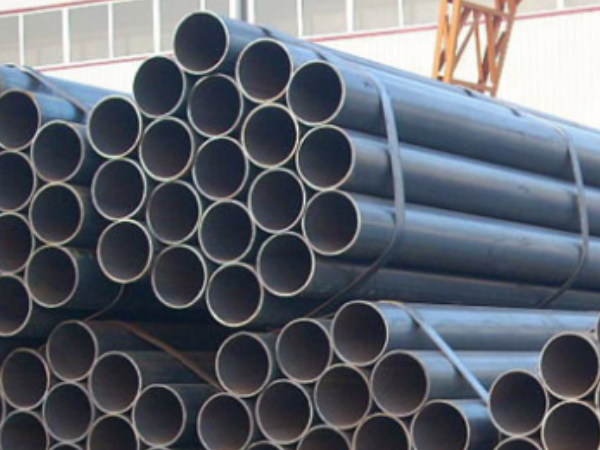2024-05-23 Back to list
ERW Pipe Specifications and Models
ERW piping specifications and models are an essential part of many industrial systems and processes. They are made of steel and are critical components in the transport of fluids and gases. ERW pipe comes in a variety of sizes, shapes and materials, each with its own set of technical specifications. Knowing these specifications is critical to choosing the right pipe for the right job.
Types of ERW pipes
ERW pipe comes in many shapes and sizes. The most common type is round pipe, which is often used to transport liquids and gases in residential and commercial applications. Square and rectangular ducts are used in architectural applications as well as furniture and decorations. Special shaped tubing such as U-bends and swept elbows can also be produced by ERW Tube Fabrication. ERW pipes are versatile and come in a variety of different sizes, shapes, models and specifications.
Carbon Steel Pipes

First, it is important to understand the basic types of ERW pipes available in the market today. ERW pipe is generally classified by its two main categories, including: longitudinal welded pipe and spiral welded pipe. Longitudinally welded pipe is made by passing a continuous strip of steel through sets of rollers that bend, shape and flatten the strip before forming a welded joint along its length. This process creates a seamless, leak-proof pipe with excellent mechanical properties. Spiral welded pipe, on the other hand, is made by rolling flat metal strip into a tube shape and welding the edges together. This process produces stronger, more reliable pipe with a higher pressure rating.
Certain parameters should be considered when selecting ERW piping for a particular application. These parameters include nominal pipe size (NPS), wall thickness (WT), material grade, coating type, and hydrotest pressure. Nominal pipe size and wall thickness are the two most important parameters when selecting ERW pipes, because they determine the maximum capacity and pressure rating of the pipe. The grade of material for the pipe should be selected based on the application and expected operating conditions, while the type of coating should also be selected based on the environment in which the pipe will be placed. Finally, the hydrotest pressure specification is determined by the manufacturer and is used to ensure that ERW piping meets the required standards.
In addition to the above parameters, there are several other variables that should be considered when specifying ERW piping. These include face type, thread type and bore diameter. The end face type can be from plain end to beveled end or flange, and the thread type should be selected according to the intended use of the pipe. Finally, the inside diameter size of ERW pipe depends on the number of times the pipe is rolled into a tubular shape and will affect the overall strength and pressure rating of the pipe.
All in all, ERW pipes come in many different sizes and models. When selecting ERW pipe for a particular application, many parameters must be considered, including nominal pipe size, wall thickness, material grade, coating type, and hydrotest pressure. Additionally, end face type, thread type, and bore diameter should also be considered during the selection process. By considering all of these parameters, you can be sure to select the correct ERW pipe for your specific application.
Material specification
ERW pipe is usually made of low carbon steel in grades ranging from A53 to A106. The most commonly used grade is Grade A53B, which has a minimum yield strength of 30,000 psi. Other materials such as stainless steel, copper, and aluminum can also be used to make ERW tubes, depending on the application requirements.
Dimensions
ERW pipe comes in a variety of sizes, from ½ inch to 16 inches. Each size has its own technical specifications, including outside diameter, wall thickness and tolerances. Wall thickness must comply with certain specifications, such as ASTM A53, which states a maximum wall thickness of 12.5% of the outside diameter of the pipe. Tolerances for outside diameter and wall thickness vary by manufacturer.
Form factor
Depending on the application, ERW tubes can be bent into various shapes. Common shapes include circles, squares, and rectangles. Other shapes, such as U-bends and swept elbows, can also be generated by manipulating the internal shape of the pipe. Bend specifications depend on the material used and the desired bend radius.
Weight specification
ERW pipe is usually sold by weight, so it is important to know the weight specification. Weight calculations depend on the material composition and dimensions of the pipe, as well as the wall thickness. Larger pipes with thicker walls are generally heavier than smaller pipes with thinner walls.
Design considerations
There are several design considerations to keep in mind when selecting ERW piping for a particular application. Determining the correct piping material, size and shape for an application is critical to ensuring proper piping operation. It is also important to consider the pressure, temperature and chemical resistance of the pipe, as well as its load carrying capacity.
Conclusion
ERW piping specifications and models are an essential part of many industrial systems and processes. Knowing the different types of plumbing available and their technical specifications is critical to choosing the right plumbing for the job. ERW piping comes in a variety of materials, sizes, shapes, and weights, and it is important to consider material, size, shape, weight, and design considerations when selecting piping.
-
DOM vs ERW: Which Is Stronger And What’s The Difference?
NewsJun.25,2024
-
ERW Pipe Specifications and Models
NewsMay.23,2024
-
ERW PRECISION TUBE
NewsJul.13,2024
-
WHAT IS ERW STEEL TUBE?
NewsMay.23,2024
-
WELDED STEEL PIPES DEMYSTIFIED: EXPERT BUYER’S INSIGHTS
NewsMay.23,2024
-
Classification of welded pipe
NewsMay.23,2024
 info@hbhuayang.com
info@hbhuayang.com
 +86-317-5296685
+86-317-5296685
